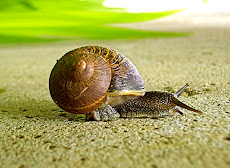 In 3rd grade I made a covered wagon out of an oatmeal box and traveled the Oregon Trail. I kept a journal with a green burlap cover and pink yarn stitching, the words "Oregon Trail" sewn on the front cover. Inside its burnt pages (to make it look old) tell a story of a young boy, I was a huge tomboy in those days, traveling from Independence Missouri to the new Oregon Territory. The assignment was to outfit your wagon with items you would need for the journey and your new home. It is amusing to read the journal now, the funny little cursive handwriting with the spelling errors, expressing my imaginative interpretation of history.
In 3rd grade I made a covered wagon out of an oatmeal box and traveled the Oregon Trail. I kept a journal with a green burlap cover and pink yarn stitching, the words "Oregon Trail" sewn on the front cover. Inside its burnt pages (to make it look old) tell a story of a young boy, I was a huge tomboy in those days, traveling from Independence Missouri to the new Oregon Territory. The assignment was to outfit your wagon with items you would need for the journey and your new home. It is amusing to read the journal now, the funny little cursive handwriting with the spelling errors, expressing my imaginative interpretation of history. " I have brought with me my dog, hourse, sawing kit, 5 blankets (to make a sleeping bag), 4 oxen (to bull the covered wagon), food and a trunk of clothes".
No mention of a gun or furniture. I assume food would also include the oxen however, I am sure at 8 years old, I was only thinking of enough for myself.
This memory comes to me as I begin my own process of getting ready for a 2400+ mile road trip. It is funny how the roles Dave and I have taken on, during this process, are not so different from the husband and wife teams of 150 years ago. Like early settlers I find myself sorting through years of "stuff" and determining what goes with us and what stays behind. Dave works on the Ford "horses" and gets the "wagon" in shape and ready to roll. Where my job lies with making the Cari-Light 28 ft 5th wheel a home, organized and user friendly, with some uncamp-like amenities, Dave concerns himself with supplies; 2 months worth of food (including military rations), plenty of water, his tools, movies and of course the Playstation 2.
The packing is sometimes difficult, do I take the glass Pyrex mixing bowls or stick with the light weight plastic? In the end the Pyrex goes into storage. Clothes are at a minimum, 4 small drawers and one tiny closet, books are basically nil, and linens are vacuumed sealed to save space. Those pioneering women were courageous, leaving behind most everything knowing they would not be back, unsure of what lay ahead. I pick up embroidered linen sewn by my great-grandmother and place it in the box headed for storage, grandma's tablecloth goes in the box for the trailer, and other bedding goes into a pile for Goodwill. I process each room, closet and cupboard until the house becomes a hollow shell, echoing the sounds of my footfalls in the empty rooms. There is a cleansing in this, relieving myself of accumulated things, determining what truly is of value and what is just stuff. And although the items I put away for a later time seem important now, in a year or two of living with less, that will change. What were those women's thoughts as they processed their lives into piles? What preparations did they make for themselves- mentally, physically, and spiritually?
I have a much easier journey. Todays technology has allowed me to bring the modern home on the road. The internet, flat screen TV, indoor plumbing, refrigeration, electricity... oh and plants. What more does one need?
During a time when fifteen miles was a full day of traveling there were a few individuals inventive enough to add luxuries to their wagons. Often farm wagons were used instead of the large conestoga wagons, for their size and handling. The front wheels were designed smaller than the rear wheels, the axle pivoted for getting around corners, and the rigs were equipped with hardwood brakes. (The Oregon Trail, "Jumping Off", M. Trinklein, 2003) Women would sometimes line their wagons with cloth sewn with pockets for their "special" items they could not live without. The colorful material created a cheerful feeling of home, during those long days on the trail. In many westward diaries 'India Rubber water bottles' were often mentioned as a means of carrying water. One pioneering woman, Margaret Frink, had a mattress made out of the India Rubber, "allowing for convenient water storage as well as a comfortable sleeping pad". (eSsortment, Inside a Pioneer Covered Wagon, Robin Flinchum, 2002 pagewise)
As Dave and I arranged our route we discovered many of the highways and byways we would be traveling on were the same trails, although now paved, that our early predecessors once trekked across. By following the Oregon Trail backwards we found an easier route through the Rocky Mts, heading into Wyoming toward Fort Bridger, instead of traveling south into Utah and Salt Lake City. While Oregon celebrates its sesquicentennial birthday, these history buffs look forward to the retracing of wheel ruts that have gone before us. We may not know where our roads will lead us, but with the pioneering spirit and joy of adventure in our veins we are sure to have some stories to tell at the end of our journey.
